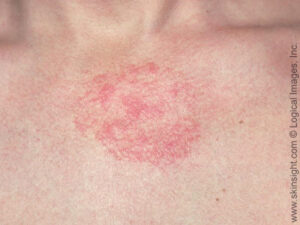 Seborrheic dermatitis is a common skin disorder that causes flaking skin in areas where the skin is oily, such as on the scalp, and around the ears, eyebrows, eyelids (blepharitis), nasal folds, armpits, and groin.
Seborrheic dermatitis is a common skin disorder that causes flaking skin in areas where the skin is oily, such as on the scalp, and around the ears, eyebrows, eyelids (blepharitis), nasal folds, armpits, and groin.
On the scalp, seborrheic dermatitis appears as dry pink or flesh-colored patches with a yellow scaly surface. The patches may spread to the entire scalp and lead to dandruff.
Seborrheic dermatitis may occur on the scalp of infants when it is referred to as "cradle cap". Adolescents and adults may experience seborrheic dermatitis as a chronic condition that comes and goes and fluctuates in severity. In elderly patients, seborrheic dermatitis may be associated with nervous system disorders, such as Parkinson's disease. People in hospitals or nursing homes and those with immune-system disorders are also more prone to seborrheic dermatitis.
Some cases of seborrheic dermatitis may be caused by an overabundance of a normally harmless skin yeast (malassezia). The yeast produces substances that irritate the skin and make it itch. Stress and physical illness can lower an person's resistance to the yeast, resulting in a worsening of symptoms.
Seborrheic dermatitis is not contagious.
Treatment
There is no way to prevent or cure seborrheic dermatitis. Many mild cases may get better on their own, but medications can be helpful for controlling a flare and reducing symptoms.
Treatment options for seborrheic dermatitis include topical corticosteroids, tar cream, and antifungals, such a ciclopirox or ketoconazole. Some of these agents available in the form of medicated shampoos.

the nose in people with severe seborrheic
dermatitis.

chest and have round, red areas in
addition to slight scaling.
Non-prescription shampoos containing tar, pyrithione, selenium sulfide, and/or salicylic acid may also be helpful.
Cradle cap can be treated by using daily shampoos with a gentle cleanser and massaging of the scalp. Cases that do not resolve at times require a prescription topical medication.
Source: Vivacare
Last updated : 5/13/2022